Sibylle Ciarloni – versatile ingenious writer, artist, curator, and dialogue architect – is working to launch a residency program dedicated to Relational Art and placed on the Italian Adriatic coast. Using her words, ResidenzaLAB is a research station with a publication laboratory. The concept of this extended residency is simple to imagine: artists work together with interested people from the region, creating a public artwork. The most important goal is to invent, find and try out dialogue practices to document and reflect on them and make them available to the public. In the three years of repeated, multi-day meetings at the same location, relationships will be developed, and the traces of the collaboration will be visible in the region. The inspirations and findings will be documented and recorded in a book and published online. Still, the artist is searching to finance the idea and to find fifty-five private contributors and public or private foundations.
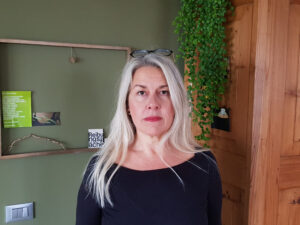
Sibylle Ciarloni, portrait, 2024. Courtesy Sibylle Ciarloni
Erka Shalari: What made you choose as your home and work base this space near the Adriatico sea?
Sibylle Ciarloni: The shore, for me, is vital to get my thoughts in a row. Sometimes I need the regularity of a horizon, as too many mountains and buildings have been in front of me. I was trying to have a dialogue practice in Switzerland, where I always had that base. Here, I went for residencies, work and travels abroad, and for some years, I was part of an atelier in Berlin. After more than forty years in Switzerland and some uncertain calculations, I found this place, which is now my place. I knew it before because it is where my love comes from and where my love actually lives with me and another love, our dog. This liaison is very much about me, I like to make kin, and I am lucky to have all of this now: a regular horizon through which I am able to plan projects and happenings for the future. Our house has a rooftop to sit with others to make kin, think together or cook tomatoes to make salsa. The trouble of the city is far, and when I need it (which happens), I take the train and travel to the north. «It’s nice to have a base in Italy», said the artist and co-founder of Art Workers Italia AWI, Elena Mazzi, when I met her in Modena during my curatorial studies. Yes, it is. When I came here, my hope was to find a bit of the words from that very elegant song by Soap&Skin: «Nurse me, feed me, release me, in Italy». But, well, Italy is a massive thing with a lot of ideal pictures. When I moved here, I knew I would have loved to practice relational art projects and, in the background, with a pseudonym, secretly become a very famous writer. Then Covid happened, and I thought: «Wow, and now, how?». In September 2022, I started my curatorial studies at Fondazione Modena Arti Visive, this was my turn to go ahead with my ideas. Relational art is that kind of art where the sellable is not at the centre but the experience of a group is. It is not about an image but about imagination.
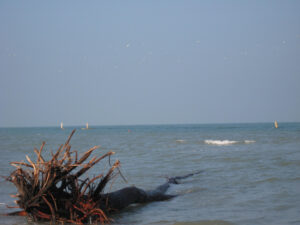
ResidenzaLab, territory impressions. Courtesy ResidenzaLAB and Sibylle Ciarloni
Switzerland has four languages. Did this have an impact on your life and thinking?
Yes, it did. We always had a minimum of three languages. Moreover, once Switzerland was a land that people used to leave. Now, it is a land where people come to live. I grew up in classes with children from Spain, Italy, Yugoslavia, Germany, Turkey and Argentina.
How do you bring people together? What do you have to focus on, for example, when you organise a “Pomodoro workshop” or when you used to plan an evening at your former Salon Billa in Baden? How can people work on something together?
I like to meet people and have a good time; I like to connect with them and to connect them too. In connecting there is a kind of chance and hope, therefore, it functions in your brain; I mean, the connections will bring you further. With every thought, networks of neurons collaborate. No central point records the individual thought, but a thought is always scattered throughout the brain. Then, a vast number of electrical signals spread through our heads. To learn, to exchange, to have created a momentum together where everything is really fine, this is what I look for in my activity by connecting people. I am no competitor at all, and not being this – I think – is a skill for our future. By bringing people together, you must know how you present and how much you determine a person to the others before or at that moment of the meeting: it is a sensitive moment. For example, if I say «Hey, this is Tom, he really knows how to make a perfect parmigiana» is different from saying «He knows everything about Dada or Kae Tempest». For my gusto, it is always better when everyone does/has loads of self-presenting moments in which things can be said or not. I love it when the Italians say: «Faccio cose» (I do things). This is very open, meaning you do something and have plans, then go further by saying something about them or telling them you have a canary bird. I once met a woman in the same house where I lived for a week in Alicudi, we had much fun without knowing each other’s “preferences” but our names. We exchanged names and phone numbers only at the end of that week. We are still connected, and I think this is also because of our free exchange of ideas during the first days we met. But in order to answer to your question: when I work on something with others, I like to be very well prepared, reading books, notices, and having prepared thoughts. However, every time I forget all the preparation when the meeting is happening because I love to give space for what can happen.

ResidenzaLab, territory impressions. Courtesy ResidenzaLAB and Sibylle Ciarloni
It is not easy to define relational art, for many the term remains very abstract…
The artist is often part of the relational artwork. But the experience and the people participating create the work’s ultimate meaning. The settings of these artworks are sometimes in a public space. They can be temporary containers for experiencing human connectivity within the social context of the works. This kind of art inspires change. I guess it started slowly with artists willing to be involved or to make their missions available to people who have nothing to do with the language of art, the art market or the artists. They desired to come to reality, some wanted to escape from the market, where you are too busy creating your image and being sellable. The political aspects of art are not attractive to all artists, but many artists are political or interested in collectivity and society. To work only for the market is difficult, but one can always do both: works to sell and works to experience. The terminus of art is continuously changing, this is in its DNA; every definition has a problematic side, and if you ask, every person has his idea of what art is. The keyword for the history of relational art projects is participation. Its roots can be found in the theatre. I sometimes refer to Alison Knowles’s “Make a Salad” (1962), a performance that involved, for example, doing a regular thing with a togetherness approach by giving value to it. With ResidenzaLAB, I want to bring dialogue as a regular thing into the spotlight.
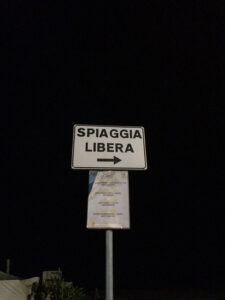
ResidenzaLab, territory impressions. Courtesy ResidenzaLAB and Sibylle Ciarloni

ResidenzaLab, territory impressions. Courtesy ResidenzaLAB and Sibylle Ciarloni
Did topics of our time like Covid, destruction, climate change, and capitalism also impact the need for more such works? When did you first realise that this is the type of art you want to dedicate time and research?
There is this container called “Relational Art”, which I need for the description of the project to explain and define it. But there is more behind that container for me. My focus is on art that needs a big part of dialogical practice to be produced or to exist. I like the political aspects and the life-changing experience for all participants, even if it is a small change. Here, I want to nominate some works that impressed or moved me. They may not have the stamp “relational art”, but for me, they are. There is Francis Alÿs, the artist who – for example – moves mountains and is known for his projects working with a wide range of media, including documentary film, painting, photography, performance and video. The artist directs his distinct poetic and imaginative sensibility toward anthropological and geopolitical concerns centred around observations of and engagements with everyday life. The artist described his work as «a sort of discursive argument composed of episodes, metaphors, or parables». I really love the sensitive look Alÿs has and how respectful his involvement of people is. I also would like to talk about Rivane Neuenschwander, who works with social interaction and is known for exploring language, nature, geography, and time. Her works are interactive, involving viewers in participatory actions. In her installations, films and photographs, she employs fragile and unassuming materials for a process she describes as «ethereal materialism». Looking at productions made together with people interested in a topic, like the farmers who were part of the crew in the short movie “Omelia Contadina” by Alice Rohrwacher and JR is moving me, too. I imagine how it was to get together, represent a particular topic, and act as themselves. There is always that meta question, between words, glances, and voices, in every dialogue like a static noise: «How can we be together in this?». You see, we need change. I feel so much tristesse in the world, and if we are not able to talk and to spend our energy for real relations and real connections, we will be sold. And I am sure that many artists live in this in-between. A space where they know how to move, they invent and think, and they also have to involve. I am sure I will learn much if I dedicate time to this kind of art. And we can change things if we think together in real dialogues. A dialogical art project of the nineties I admire a lot is Suzanne Lacy’s “The Roof is on Fire”. On the rooftop of a car park in Oakland, young people could talk with police or people they would never talk to in their all-day life. The topics are several prejudices against the youngsters, and, before all, against young black or latino people. Defining how you will work or talk together initially may be difficult, you get to know more only by doing it, which is a profoundly political act.
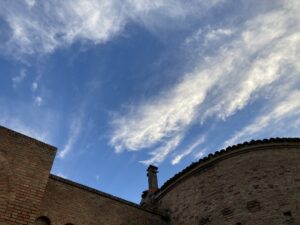
ResidenzaLab, territory impressions. Courtesy ResidenzaLAB and Sibylle Ciarloni
How can we imagine this residency? What will the artists do during these ten days? And why will they return three times to the same region, always in September?
First, it was a personal dream I once had. I wanted to work in a hotel room with just one window, able to watch the sea when I had to think. Then I remembered my last residency and wanted to create the same possibility: living together for a particular time and talking about things like cooking, behaviour, war, skiing and what art is, or philosophical questions about life and the things between reality and imagination. Then I knew I would soon transfer to Italy, I thought I would have used a shipping container, maybe a red one with Hamburg Süd, in our garden and host another artist every summer. But this was impossible because of permissions and climate conditions. We have very hot summer months, and it would have been a self-cooking experience rather than an artistic one. For ResidenzaLAB, the artists will work on a topic and a “how” question (e.g. How can we connect different realities to start a dialogue? How can humans learn from the society of plants?). Then, they will connect to people interested in collaborating. This is, for now, very abstract. Still, I will publish an open call for artists and another one to find people interested in this co-work from around San Costanzo, Marotta-Mondolfo and Fano. How they talk about and how they act together will be developed at the moment of the meeting in September. Together with my team, I will prepare a schedule: workshops, meetings, walks and free time. Relational art is based on listening and collaboration. It is the collective that is creating the artwork as an experience. ResidenzaLAB aims to create dialogue and document these agencies and actions. After the circle of meetings and working times in 24 months, we will publish the documentation through an online platform and book.
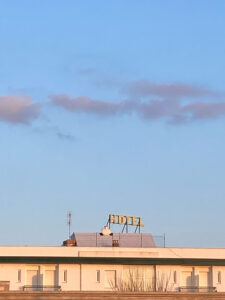
ResidenzaLab, territory impressions. Courtesy ResidenzaLAB and Sibylle Ciarloni
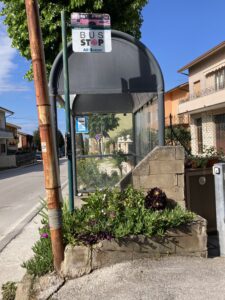
ResidenzaLab, territory impressions. Courtesy ResidenzaLAB and Sibylle Ciarloni
You have already found the place where the artists will be living during ResidenzaLAB, it is not that initial red container that you thought in 2018, but an amazing structure you have been encountering. What made you fall in love with the location? I also feel that the area is a long-time part of your work. Also, your book “Strandläufer” has this seaside as scenario.
I have known that area for about thirty years. Now I have lived here for around five years. I met my love here and saw my father walking down the beach. After he died, I started to observe Strandläufer, men going down the beach, for years from the warm sand, taking pictures and slowly making an artist’s book. The place is nothing spectacular, and maybe for this, it is not charged with too many expectations of how you have to be and what is right or wrong… Besides that, I always liked to find unspectacular places. With a friend of mine in Basel, we sometimes met in a restaurant that was no it-place at all, and this made us breathe. Cities and people who live in them sometimes have a storytelling of the place to be and where you should make it, but not everyone wants to reach that place to be. Many of those who move there find themselves in an apartment in the suburbs.
Tell me more about your cryptic question: How can humans learn from the society of plants?
We can always ask this question because they behave, they listen and grow if the circumstances are favourable, and even communicate. We think we decide what to do, but this means for me to be blind and not seeing what is happening. The challenge is translating what we can read from plants behaviour or plants intelligence as a society, and I like the thought. With this, I would like to inspire our decadent way of being part of something above nature. I am sure that nature does not care if humans are here or not, why should it, but on the contrary, we must care, because we need it. We know how glaciers are melting, but we fly to Acapulco. That may sound easily said and repeated a thousand times, but the impact of this acting is not a commercial topic. I am annoyed to talk about it, but because of this, I ask all artists to reach ResidenzaLAB by train or in a shared car. I imagine a part of the journey on a night train, making strange connections with people, drinking beer with strangers or just talking to no one, reading a book with a travel light, sleeping and thinking of how it will be or how it was and feeling the journey, the distance of home to come here and to reach home again after ResidenzaLAB.
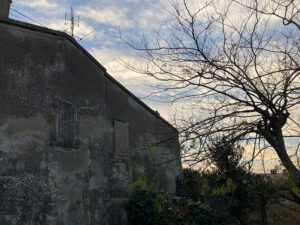
ResidenzaLab, territory impressions. Courtesy ResidenzaLAB and Sibylle Ciarloni
Because of you, I own a very interesting book today with hypothetical questions proposed for imagining alternative realities. I would like to pick a question and pose it to you. It is on page 8 and asks: «What would it be like if you were to invent a language? What would be the founding principles of its grammar, the appearance of writing, and the word for decadence?»
I love “The Conversation Book”, and I remember that question. I would love to invent a language that is made only by hand signs, very simple signs to say essential things like “Hello”, “I am afraid”, “I like your smile”, “I don’t want this”, “Can I sit next to you?” and the signal for help, that last year came up with the many femicides in Italy. So, no writing exercises have to be done, only the ability to talk with one hand in a consent way worldwide. Language is individual or owned, but communication should be accessible to everyone. I would choose the military salute as a symbol for the word decadence, as it means that you are following an order. This supports the non-responsible action, an action premeditated by someone else. And we can no longer live with this simple-mindedness since Hannah Arendt and many others before and after her. We cannot only do what others want us to do; we must think before we do and be responsible. The awareness of how things are connected is different today. Or could it only be a different one?
Erka Shalari
Info:
Sibylle Ciarloni, ResidenzaLAB
2024 – 2026
San Costanzo (PU)
residenzalab.net
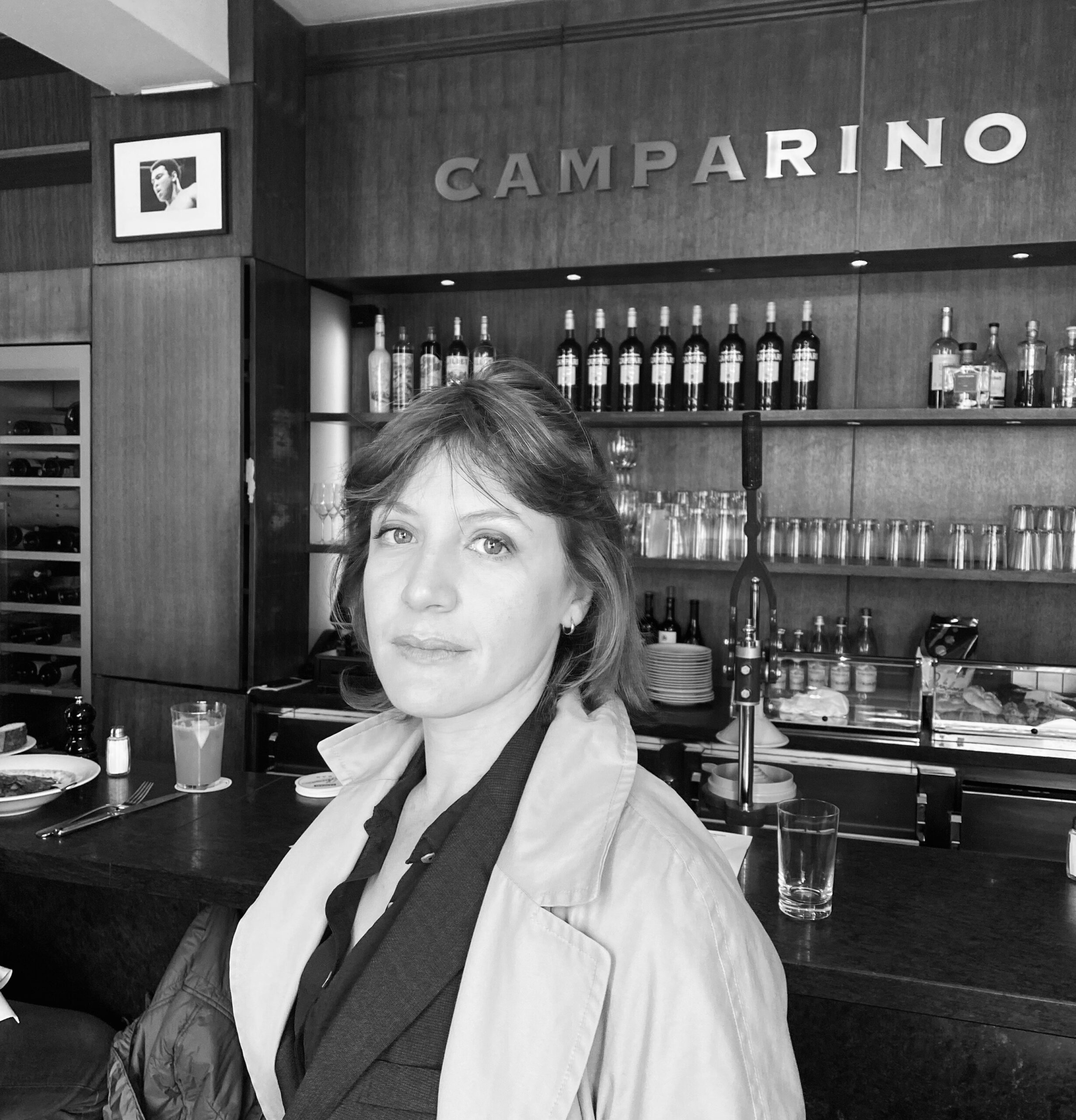
Erka Shalari is a Vienna based art writer and editor. Her work is committed to uncovering distinctive artistic positions in contemporary art. The work methodology is strongly influenced by psychology, epistemological works, as well as affects and rituals.



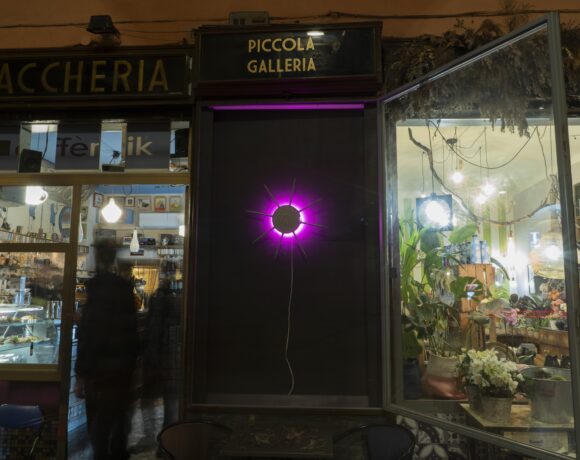
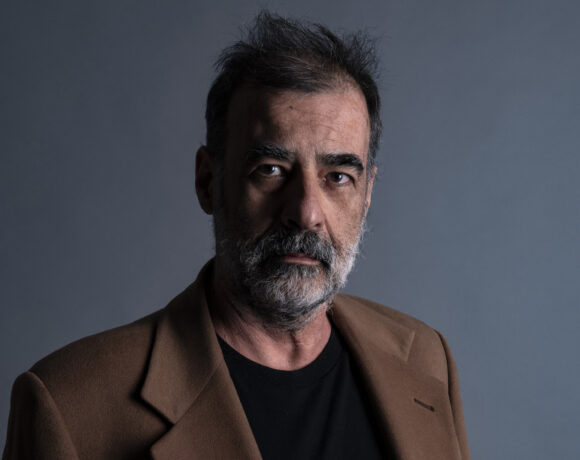

NO COMMENT